If a glimpse of your neighbor’s gorgeous grass makes you green with envy, fear not! The secret to their Instagram-worthy garden might be hiding in plain sight — their irrigation system.
What Is an Irrigation System?
Having an irrigation system is like having a personal assistant for your garden. Your plants get just the right amount of water without you having to take time out of your busy schedule to, well, water them. You can effectively control many modern irrigation systems manually, or with the press of a button on a control box, remote, or mobile app. Automated irrigation systems with timers make watering your plants even easier.
Water irrigation systems come in different shapes, sizes, and complexities, making it easy for you to find a good fit. Let's look at what you need to know to make an informed choice that will lead to a lush lawn.
How Do Irrigation Systems Work?
Ever looked at your sprinklers or drip lines and thought, “What sorcery is this?” Probably not. Irrigation systems have been around since 600 B.C. and are so commonplace that we rarely if ever wonder how they work. But it's helpful to learn how they function.
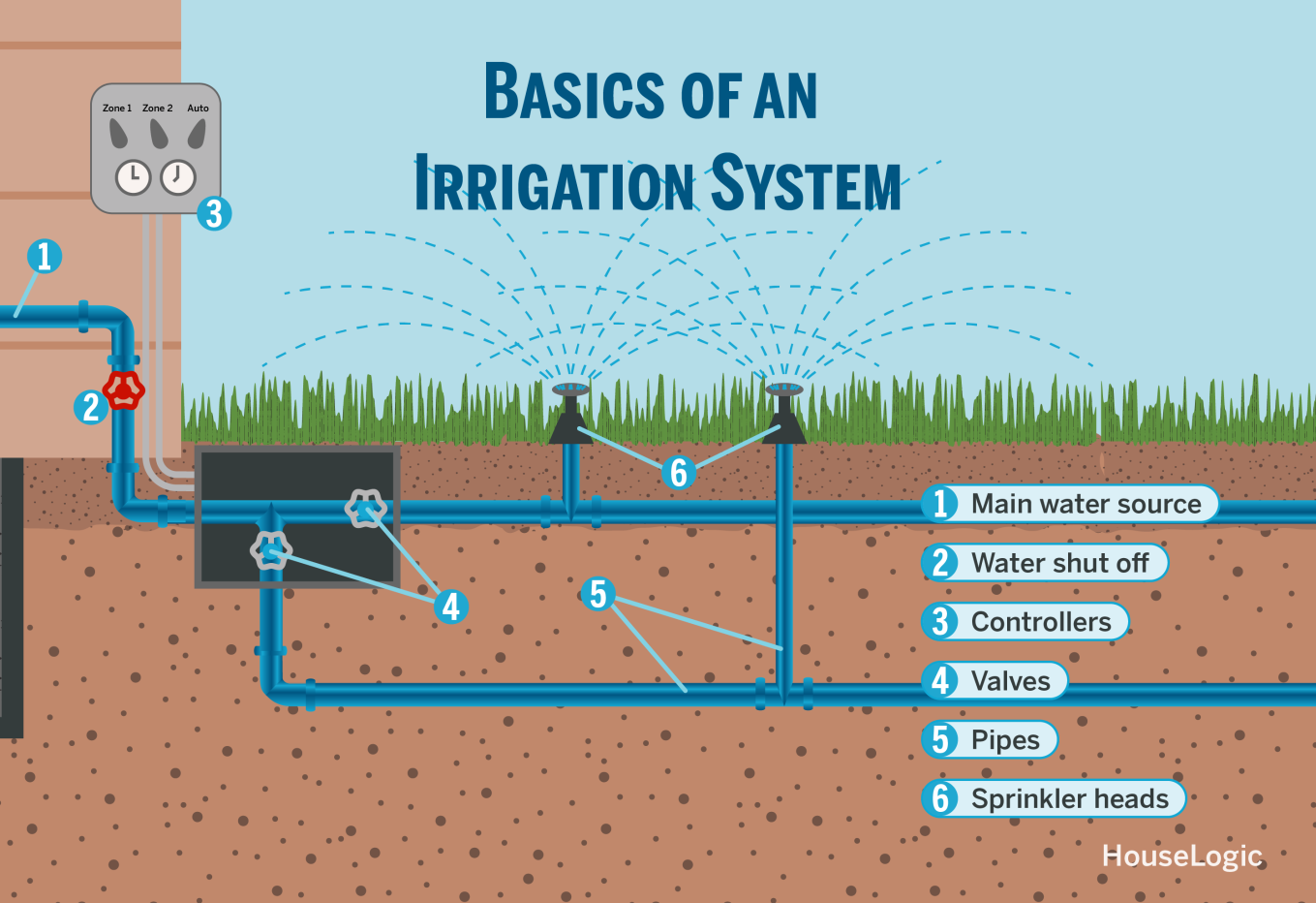
#1 Main Water Source
First, there's a main water source, whether it’s an outdoor faucet or a dedicated water line.
#2 Valves and Pipes
Think of these as the arteries and veins of your irrigation system, delivering water to every part of your garden. They can be underground, hanging up, or somewhere in between.
#3 Controllers
Controllers help you set the watering schedule, adjust run times, and feel like a garden wizard as your flora flourishes.
#4 Sprinkler Heads
These pieces are responsible for releasing water to the plants. From tiny drip emitters to grandiose sprinkler heads, these can make irrigation an entertaining spectacle on a sunny afternoon.
Types of Irrigation Systems
If you’re looking for the radiating feeling of a well-hydrated garden, you'll need to consider the type of irrigation system you'll install. The two sub-categories of irrigation systems are above-ground and in-ground. As you may guess, above-ground irrigation systems are visible, so they could be prone to lawnmower damage. In-ground systems lie beneath the surface, so they can avoid being chewed up by a lawnmower. Here are some of the most common options.
Sprinkler Systems
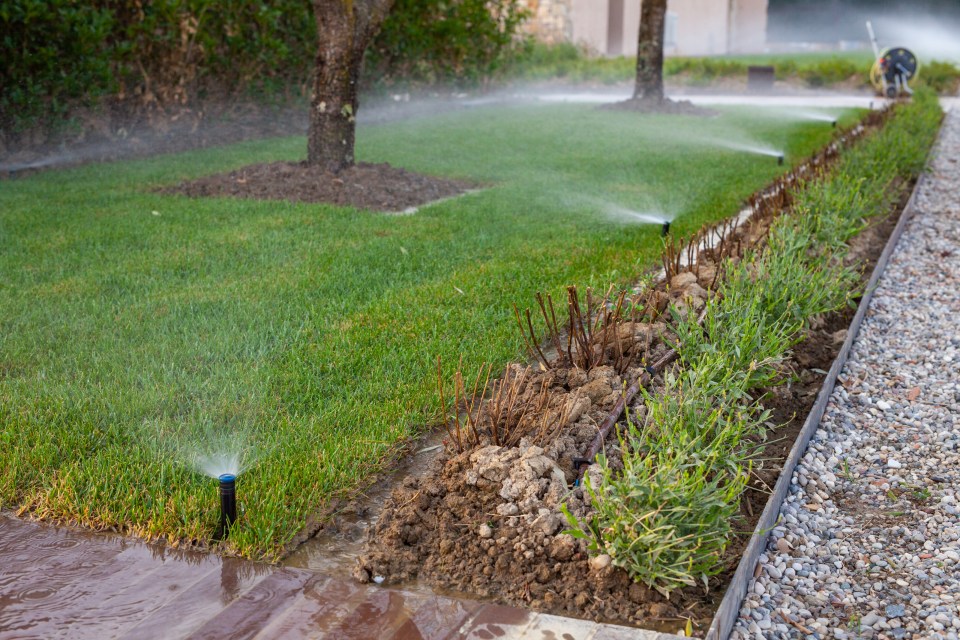
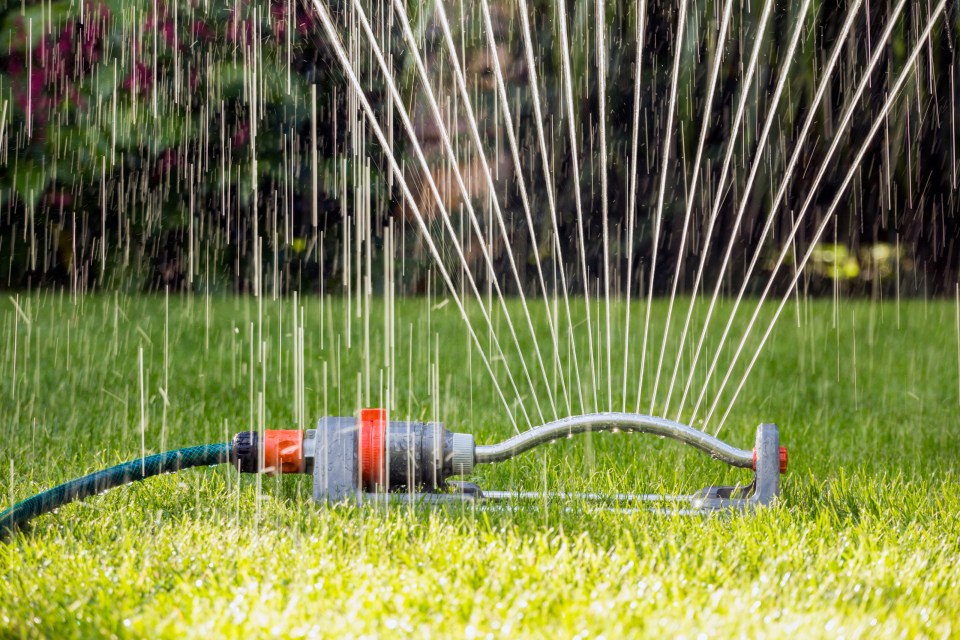
A below ground irrigation system (pictured first) and an above ground irrigation system.
Sprinklers are the old-school garden irrigation systems that offer a playful dance of water across your lawn. Pop-up sprinklers, oscillating sprinklers, or high-end rotating ones keep your lawn green while doubling as great entertainment for your kids.
Above-ground sprinkler systems are convenient for small gardens, and installation is a minimal lift. Sprinkler systems provide even coverage over large areas, making them ideal for lawns, gardens, and landscaping. But they may be less water-efficient than drip or soaker hose systems, because they're prone to evaporation and runoff.
On average, installing an above-ground sprinkler system costs $1,800 to $2,000 on a one-acre property. If you’re ready to start your sprinkler journey, see our handy guide to buying and installing a sprinkler system.
Soaker Hoses
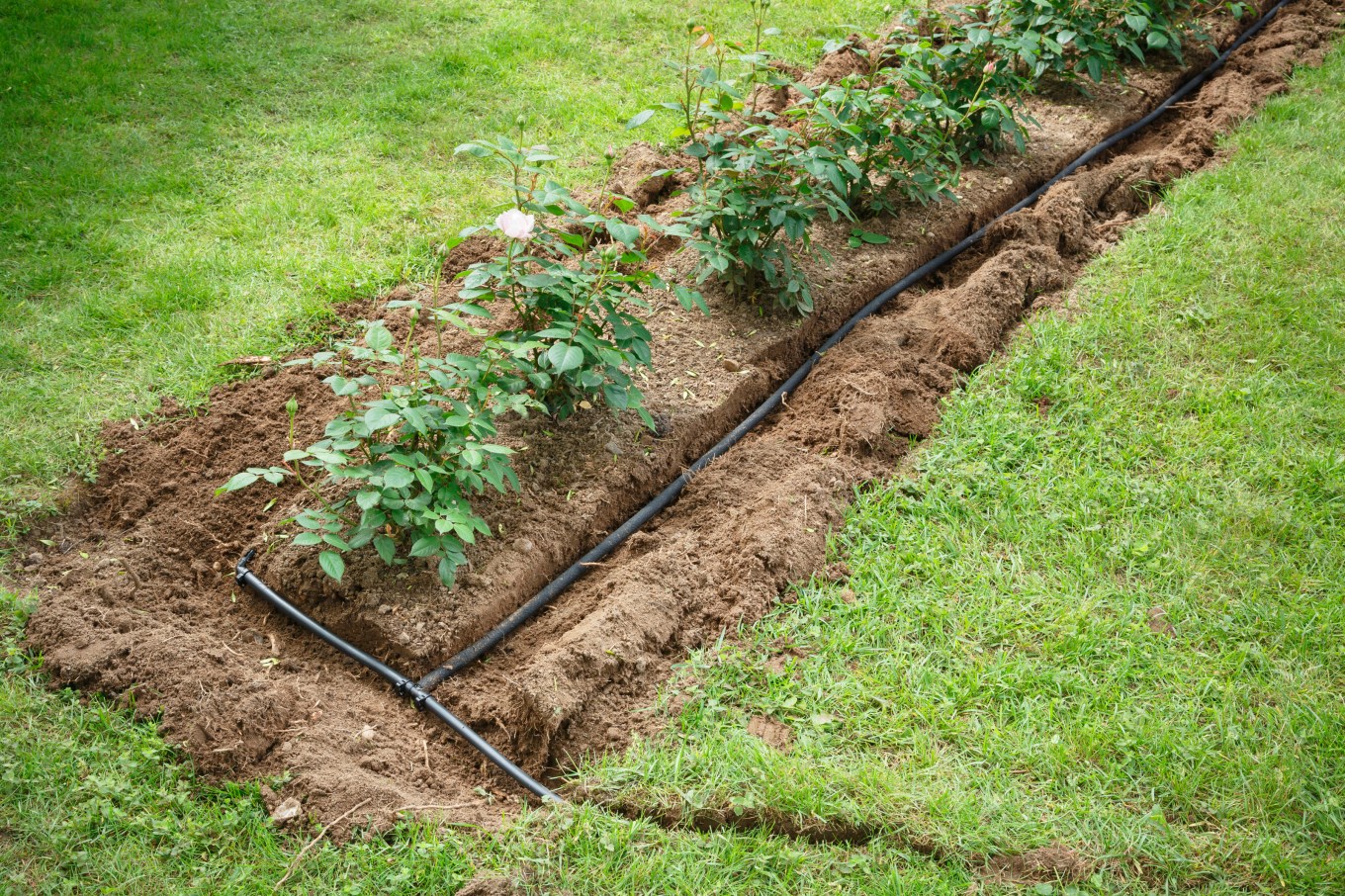
Soaker hoses lie over the ground and release water at low pressure to the base of your plants. Perfect for flower beds and vegetable patches, they're a portable and low-key watering solution and cost between $20 to $60 for spaces ranging from 25 to 100 feet.
Soaker hoses may have limited coverage and may not be suitable for large garden areas. They're great for smaller areas like garden beds, the base of trees, or raised beds with new plantings.
Drip Irrigation Systems
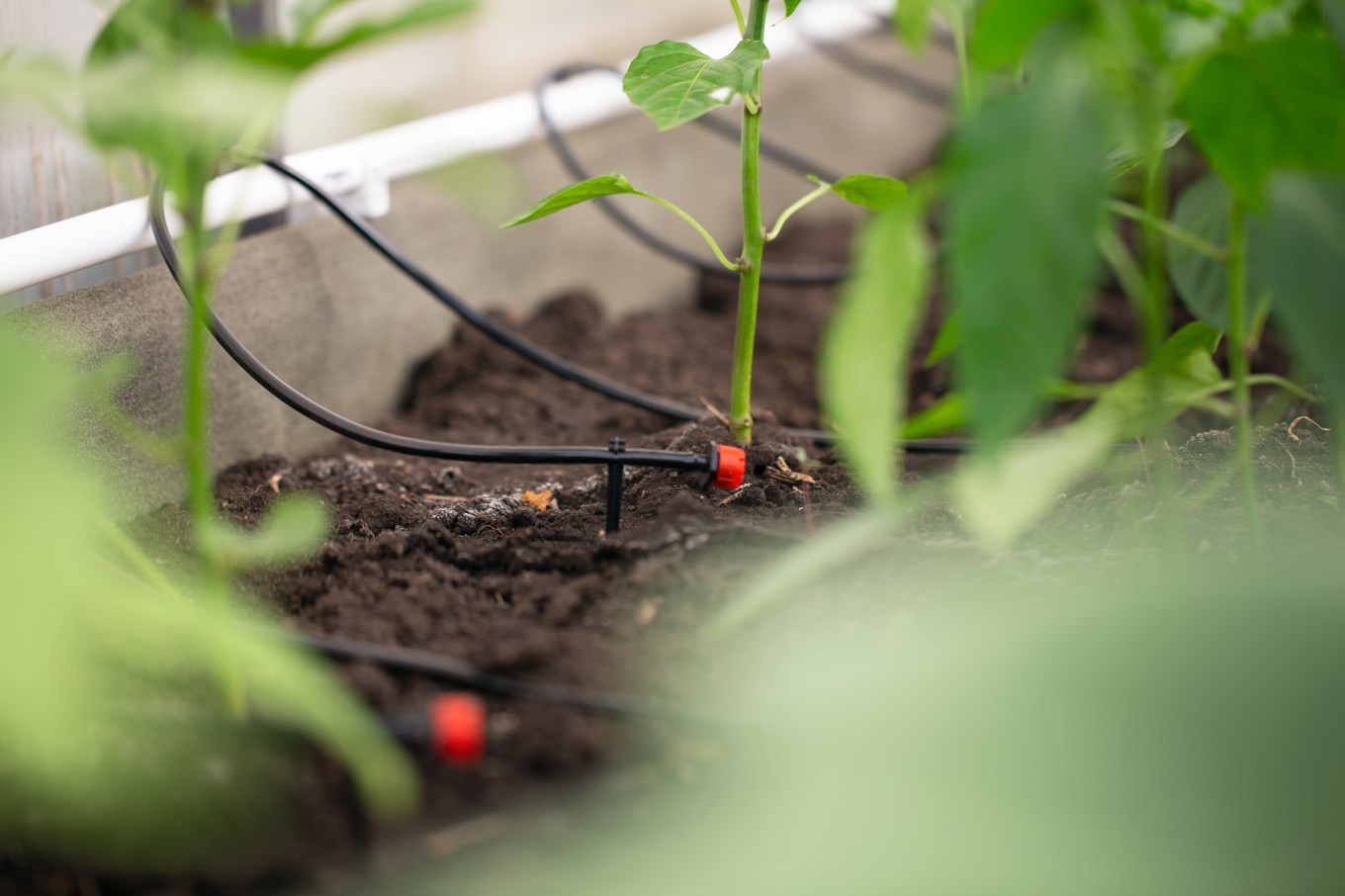
For more subtle, zen garden vibes, drip irrigation is a common choice. Above-ground drip irrigation is efficient, delivering water directly to plant roots, keeping the leaves dry and disease-free, and possibly even lowering your water bill. However, sediment or debris and clog drip emitters and tubing, which require regular maintenance. Drip irrigation systems work best for gardens with well-draining soil.
Installing a drip irrigation system on a one-acre piece of land costs $1,800 to $2,500.
Subsurface Drip Irrigation Systems
In-ground drip irrigation systems are installed below ground and offer the same benefits as water conservation. They cost $2,000 to $4,000. Subsurface irrigation systems are great for irregularly shaped plots and for gardens with plants that have varying water needs.
Don’t be deterred by the cost of a professionally installed irrigation system. If you want to DIY the project, check out these garden watering systems you can make yourself, including a drip hose.
Subsurface drip irrigation systems minimize water loss due to evaporation and runoff, making them effective for dry climates and fruit and vegetable gardens.
Alternative Irrigation Solutions
Looking for something a little more specific to your situation? Consider a few other watering systems.
Manual Irrigation
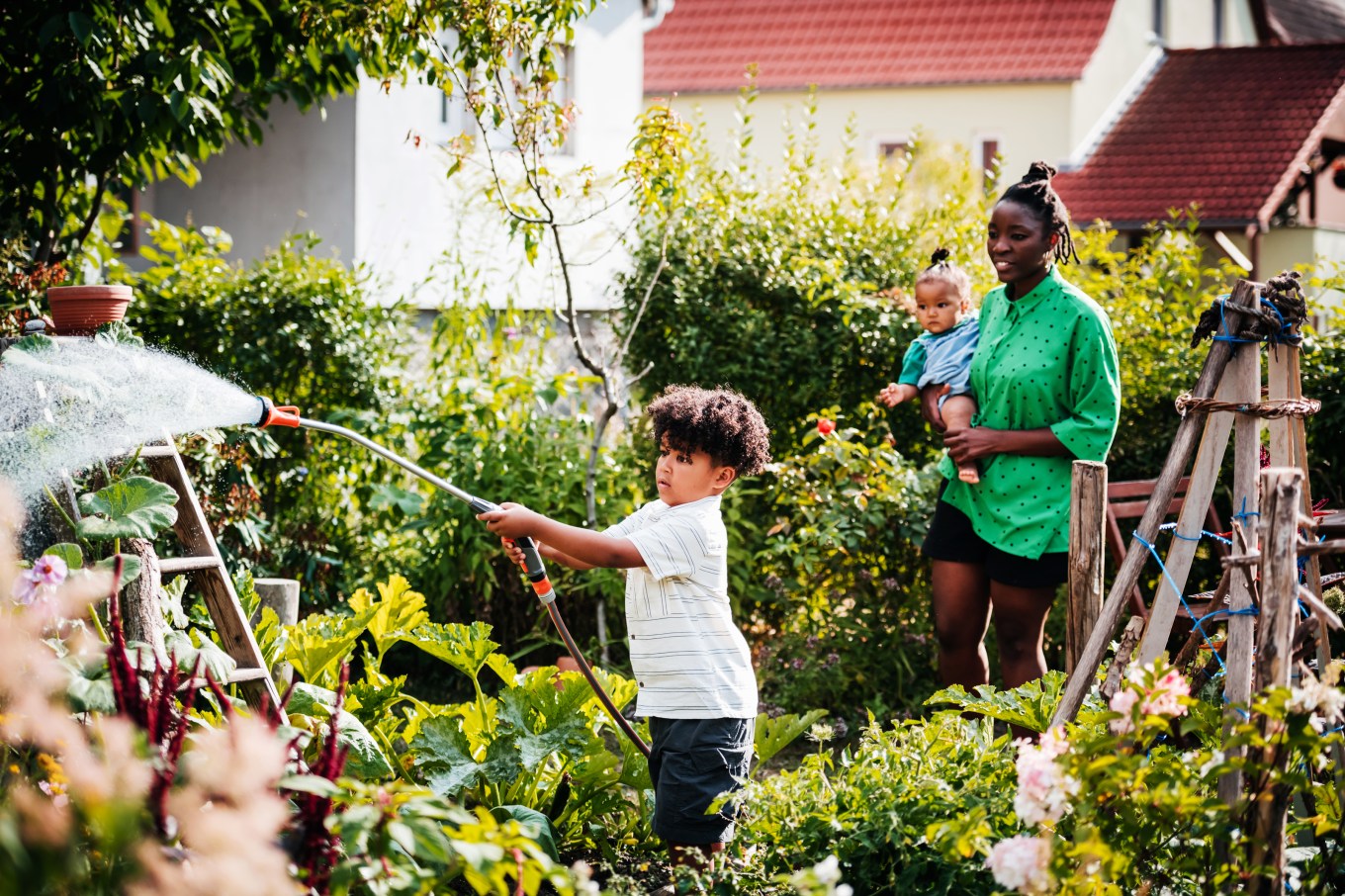
OK, yes, it may seem obvious, but if you're on a tight budget and you're not sure what method will hydrate your outdoor spaces most effectively, consider using your hose or even a good old-fashioned watering can. This can be a cost-effective option, at least as you’re getting started. It can also be useful if your plants are dispersed across your space, making the cost to install pipes and valves unnecessary. It's also a valid option if you want to be hands-on with your greenery and have the time.
Manual irrigation gives you total control over water distribution, and you can easily adjust your watering schedule based on the weather. On the flip side, it can be labor intensive and take more time than you have available. Manual watering works for most plants and soil types.
Remote Irrigation Systems
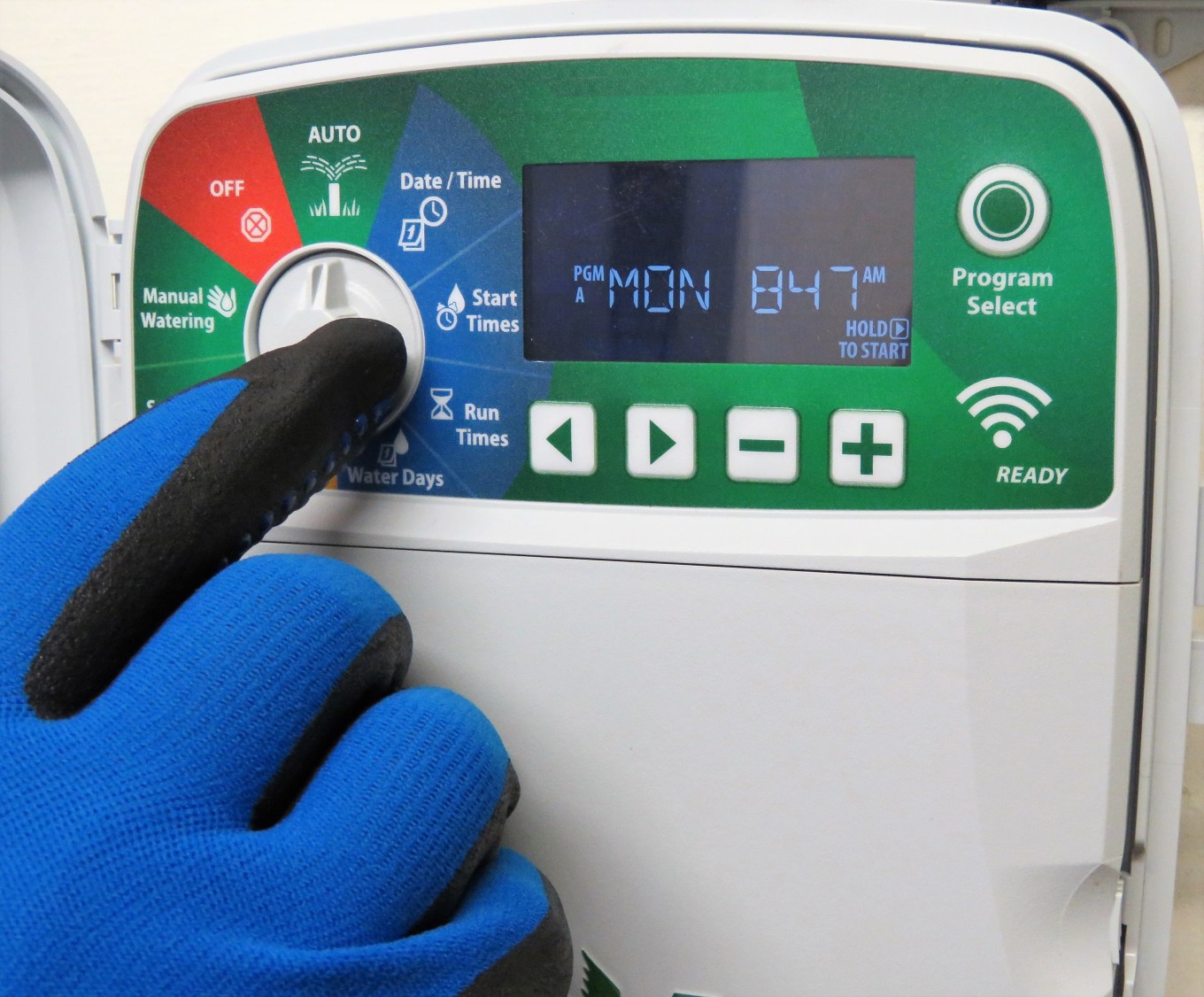
As we mentioned earlier, many modern irrigation systems offer app-based solutions for homeowners who want to automate their lawn care regime. These systems can cost from $200–$500 and some use local weather data to adjust the amount of water they use.
Plus, if you're going on vacation, don't worry about plant watering. Have a plantastic time knowing your plants will still be alive when you come home. And, consider a few additional options to help automatically water your plants when you’re gone.
Plus, if you're going on vacation, don't worry about plant watering. Have a plantastic time knowing your plants will still be alive when you come home. And, consider a few additional options to help automatically water your plants when you’re gone.
Rainwater Irrigation
The average garden requires one inch of water per week in addition to rainfall. If collecting rainwater is legal where you live, it's an eco-friendly way to generate that extra inch of water for your plants while reducing your water bill. Rainwater collection systems collect water from rooftops and store it in a tank connected to the home irrigation system. Buying and installing a rooftop harvesting collection system costs $1,000 to $5,000.
If precipitation is low in your area, collecting rainwater can be even more important. You might also opt for drought-resistant plant options like azaleas, hydrangeas, and daylilies, since some drought-prone states impose watering restrictions to mitigate water shortages.
Rainwater irrigation is a sustainable alternative that helps lower your water consumption. These systems are well suited to gardens with sandy or loamy soil and drought-tolerant plants and native species that thrive in arid conditions. However, a rainwater irrigation system may not provide consistent water supply during dry periods.
Say ‘So Long’ to Thirsty Grass With a Watering System
Remember, the grass is greener where you water it, and an irrigation system can help you say goodbye to uneven watering and wilting plants. With the right irrigation system in place, you’re not just watering plants, you’re nurturing dreams of a vibrant, flourishing oasis.
